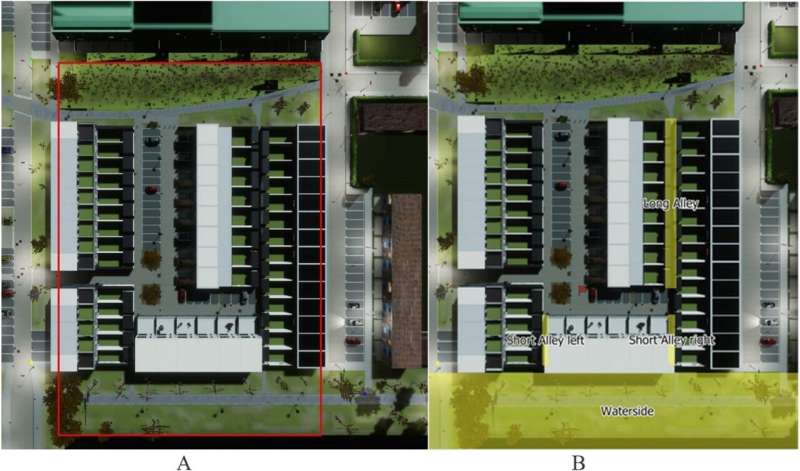This article has been reviewed according to Science X's editorial process and policies. Editors have highlighted the following attributes while ensuring the content's credibility:
fact-checked
trusted source
proofread
Virtual reality study finds that environmental interventions may not reduce fear of crime

It has long been established that changing an environment can reduce crime. For example, increased light in an area has the potential to discourage would-be offenders by making them more visible.
Along the same lines, people have been found to be more likely to refrain from committing crimes when observed or in the presence of images of eyes—something that has been dubbed the watching-eyes effect.
But do corresponding neighborhood crime reduction interventions double up as measures to reduce fear of crime? What impact do they have on average citizens?
Virtual reality in criminology
In a first-of-its-kind virtual reality study published in Cities, criminologists based in Germany, the Netherlands, and the UK—including Patrick McClanahan, Aniek Siezenga, and Jean-Louis van Gelder from the Max Planck Institute for the Study of Crime, Security and Law—found that environmental crime reduction interventions cannot automatically be transferred to fear of crime reduction measures.
Study participants' perceived fear of crime remained unchanged by increased street lighting. "Motion-activated, dynamic street lighting has been shown to be a factor in deterring offenders. But it doesn't seem to make people less afraid of crime. This finding was really quite surprising as previous research has shown lighting to be effective at reducing fear of crime. So, our results suggest that light may be more effective in certain conditions than others," explains Patrick McClanahan.
When it comes to watching-eyes interventions, they actually led to increased fear of crime levels. "One of the whole reasons watching eyes work to reduce crime is that they are meant to make people feel slightly uncomfortable and watched," McClanahan explains. "So it isn't surprising that such interventions might inadvertently be counterproductive and lead to more fear of crime."
Reducing fears, strengthening community life in neighborhoods
With high levels of fear of crime associated with people engaging less with their community, lower use of public spaces, and a general sense of overall anxiety, the livability of neighborhoods can be at stake. "In light of these findings, we need to better understand the nuances of such environmental interventions," adds McClanahan. "We need to find out if and when they can make the average citizen less afraid, but also what unintended consequences they might have."
The researchers aim to build on the study's results and explore the boundary conditions of such environmental interventions—i.e., the specific circumstances under which an intervention is indeed effective. This could benefit neighborhoods worldwide by reducing fear and anxiety and boosting community engagement and livability.
More information: William P. McClanahan et al, Neighborhood crime reduction interventions and perceived livability: A virtual reality study on fear of crime, Cities (2024). DOI: 10.1016/j.cities.2024.104823
Provided by Max Planck Society



















